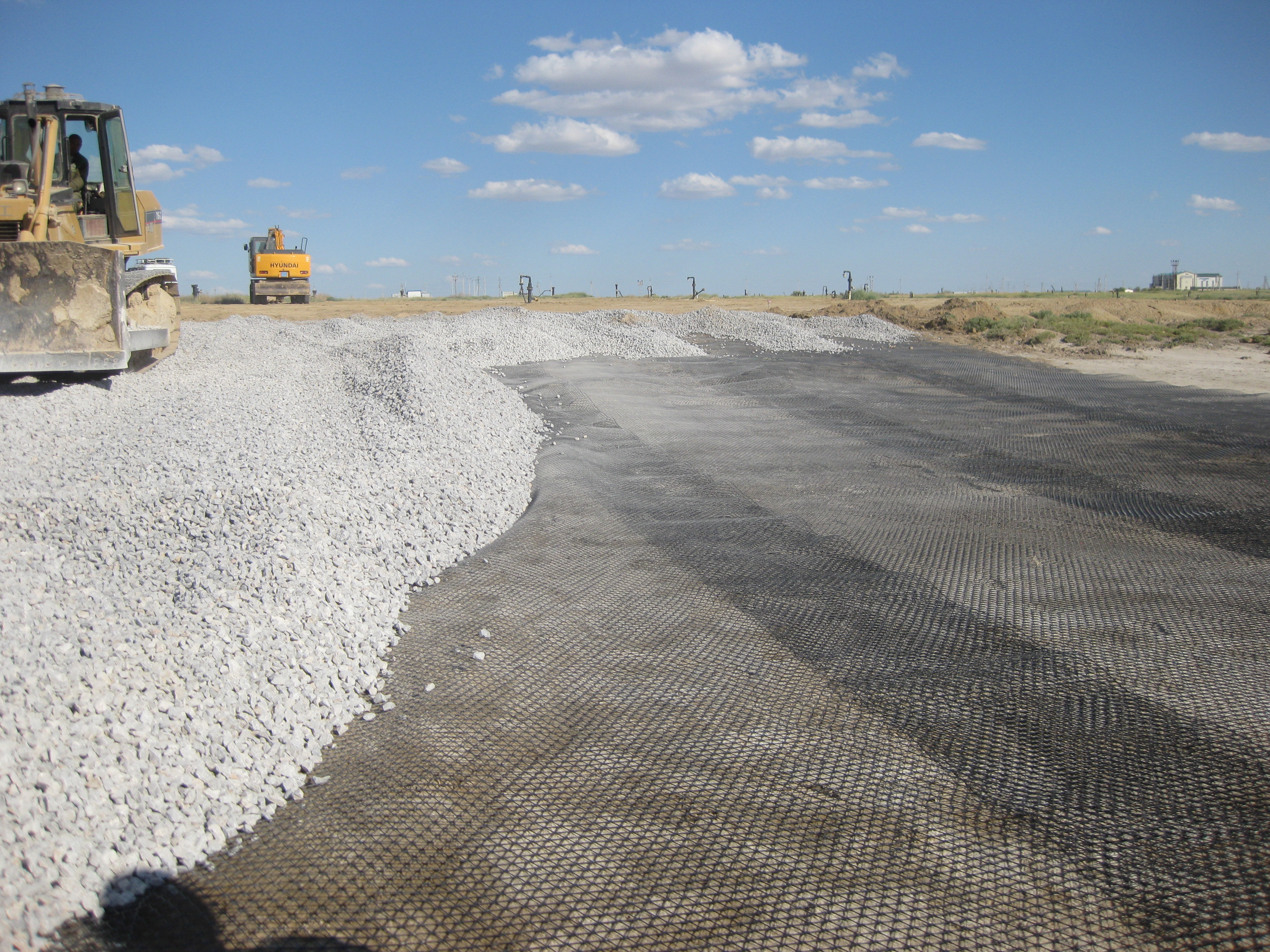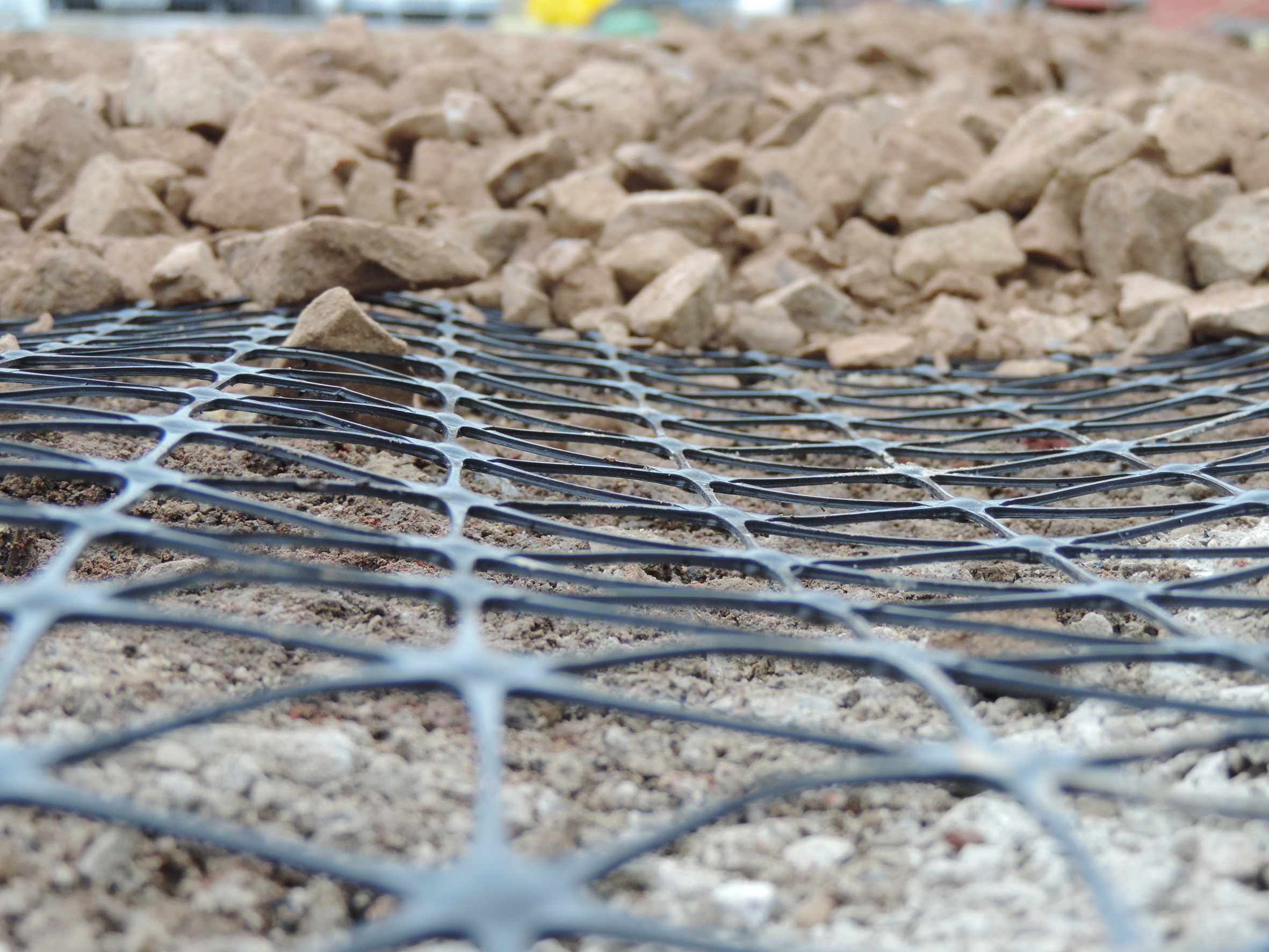Geotechnical Settlement: Types and How They Work
by Andrew Lees, on November 21, 2019
The geotechnical settlement of soil occurs when the stresses within it change. For example, when an excessive load is applied to the surface or the ground is excavated to make tunnels. Soil settlement can have catastrophic consequences, such as the collapse of structures supported by the ground.
This guide explains soil settlement in geotechnical engineering, outlining what it is, the factors that can cause it to occur and the three main components that make up total settlement over time. We’ll also explore the different types of soil settlement including differential settlement, and the effects they can have on structures. And finally we’ll look at how geogrids can reduce geotechnical settlement.
Use the links below to jump to the sections you’re most interested in:
- What is geotechnical settlement?
- What causes soil settlement?
- The three components of geotechnical settlement
- Types of soil settlement
- How geogrids can reduce geotechnical settlement
What is geotechnical settlement?
In geotechnical engineering, settlement is defined as the downward vertical movement of the ground or soil due to changes in stresses within it, often caused by the settlement load on the surface. Excessive ground movements can cause damage in buildings, structures and transport infrastructure, from bridges and tunnels to road pavements and railways.
What causes soil settlement?
Geotechnical settlement is typically the result of loading (from a building or vehicles moving along on a road, for example) exceeding the ground’s bearing capacity. Due to site ground pressures, pore water pressure increases and then dissipates, causin consolidation settlement, where the soil beneath the structure moves vertically and horizontally. Weak and poorly compacted soils are particularly vulnerable.
Soil settlement can be caused by other factors too, such as changes in soil moisture content, for example, saturated cohesive soils may soften or drier cohesive soils may shrink. Deep excavations and tunnelling, plus the collapse of naturally occurring voids or abandoned mine workings, are also key factors in causing different types of settlement.
Settlement can occur almost immediately after a load is applied or take years, depending on the underlying soil conditions and the cause of movement. Geotechnical engineers often carry out settlement analysis prior to construction to analyse the ground conditions and recommend foundation solutions for preventing settlement in the future.

Installation of a Tensar mechanically stabilised layer to prevent differential settlement in soil
The three components of geotechnical settlement
The overall process of geotechnical settlement is made up of three main components occur at different stages:
- Immediate settlement (also known as elastic settlement)
- Consolidation settlement (or primary settlement)
- Creep settlement (or secondary settlement)
These three components are explained below.
Immediate settlement
As the name suggests, immediate settlement occurs straight away as soon as the load is applied to the soil. When the load is applied, stresses in the soil change and the soil particles are rearranged, causing a reduction in void space.
Consolidation settlement
Consolidation settlement occurs because water is gradually squeezed out from between the soil particles over time. This reduces the void space that separates the soil particles such that the soil moves downwards.
Creep settlement
Once the consolidation settlement phase is completed, creep settlement begins. This component of soil settlement continues over a long period of time due to the constant pressure of the load – the amount of creep settlement varies depending on the soil type and its anisotropy, as well as the stress history and stress level in the ground.
Types of settlement in soil
There are three main types of settlement in geotechnical engineering:
- Uniform settlement
- Differential settlement
- Curvature settlement
Uniform settlement
If uniform settlement occurs, the structure (or road or railway) will settle by the same amount along its length and no damage will occur, making it the least concerning type of settlement. Uniform settlement essentially lowers the structure in its existing place, whether straight or on a tilt.
Differential settlement
.jpg)
Differential settlement occurs when one part of a structure’s foundation settles more, or faster, than the other. If one edge of a structure moves more than another, the structure will tilt, like the Leaning Tower of Pisa. This is caused by variations in soil (see below), which can lead to cracks in the structure and often catastrophic failure.
However, differential settlement should not always cause stresses to build up and so should not cause damage. However, tilting caused by differential settlement can easily become unacceptable (in buildings with sensitive machinery, for example) if the tilting is excessive. This type of settlement is often quoted as the method of judging performance of geotechnical engineering, as it evaluates the robustness of the foundation.
What causes differential settlement?
Differential settlement is caused by a number of factors, including:
-
Type of soil: Differential settlement is most commonly caused by differences in the type of soil beneath a foundation. For example, sand will settle more than clay.
-
Moisture in the soil: Soil that is too dry or too wet will settle more than soil that is at a moderate moisture level.
-
Weight on the soil: A foundation that is too heavy or has too much weight on it will settle more than a lighter foundation.
-
Size and depth: Size and depth of the foundation can also affect differential settlement. For example, a shallower foundation will settle more than a deeper foundation and a larger foundation will settle more than a smaller foundation.
-
Shape of the foundation: A foundation that is not level or has an irregular shape will settle more than a level foundation with a regular shape.
Curvature settlement
If a structure tilts, then a straight line can be drawn between one of its edges to the other. If, however, this line is curved, then this indicates different sections of the structure are moving to a greater or lesser degree.
This curvature settlement can cause distortions in the structure, inducing tensile strains that cannot be sustained by building materials (such as masonry and brickwork) or by road surfacing. Eventually this will lead to damage and cracking (and in railways, excessive curvature can mean trains cannot run on distorted tracks).
Curvature can be expressed by the deflection ratio: the maximum vertical movement, divided by the length of the structure over which that movement is measured. Curvature is therefore a key consideration when assessing settlement performance of structures.
Ground Coffee - Episode two (settlement). Andrew Lees discusses what type of settlement actually causes damage to buildings and pavements?
How geogrids can reduce geotechnical settlement
Geogrids are commonly used in granular layers to mitigate the effects of uniform and differential settlement when building on weak ground (although the approach is suitable for any ground conditions).
A granular layer stabilised with Tensar geogrids performs as a composite, due to the interlocking mechanism and particle confinement that develops between the aggregate and the geogrid apertures under loading. By controlling lateral and vertical displacement of the granular particles, this mechanically stabilised layer (MSL) can delay settlement.

Tensar TriAx interlock with aggregate
Next steps
This guide has explained the geotechnical settlement of soil. Along the way, we’ve looked at what soil settlement is, the causes, the three main components, different types of soil settlement and how geogrids can reduce its effects.
Found this post interesting? You might also like to read:
- What Is the Shear Strength of Soil?
- Plate Load Tests - Uses, Plate Size and Interpretation
- Bearing Capacity of Soil - Types and Calculations
Tensar manufactures the most advanced geogrids available, helping to reduce the amount of geotechnical soil settlement that occurs beneath structures. Visit our geogrids page to learn more – or take a look at our applications page to see how they’re used in practice.



-(1).png?width=400&height=400&ext=.png)